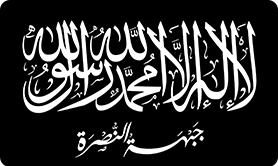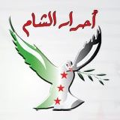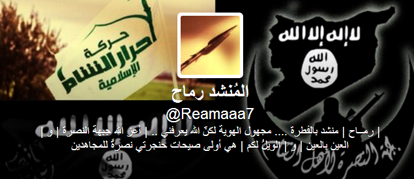NOTE: As with all guest posts, the opinions expressed below are those of the guest author and they do not necessarily represent the views of this blogs administrator and does not at all represent his employer at the Washington Institute for Near East Policy.
Jihadology.net aims to not only provide primary sources for researchers and occasional analysis of them, but also to allow other young and upcoming students as well as established academics or policy wonks to contribute original analysis on issues related to jihadism. If you would like to contribute a piece, please email your idea/post to azelin [at] jihadology [dot] net.
Click here to see an archive of all guest posts.
—
Muhammad al-Amin on Ahrar al-Sham’s Evolving Relationship with Jabhat al-Nusrah and Global Jihadism
By Sam Heller
Below we have a translation of Muhammad al-Amin’s Facebook testimony on now-deceased Ahrar al-Sham commander Abu Yazan al-Shami and the evolution of Ahrar’s relationship with Jabhat al-Nusrah and global jihadism.
Al-Amin seems to expand on some of what we already knew about Ahrar’s jihadist pedigree while also portraying an Ahrar that sharply diverged from hardliners in the Islamic State in Iraq and al-Sham (ISIS) and, later, a more extreme iteration of Nusrah. The Ahrar al-Sham and Abu Yazan whom al-Amin describes were more deeply woven into international jihadism than has been previously understood, but nonetheless became progressively more alarmed as mostly foreign hyper-extremists crowded out Syria’s own revolutionaries. Al-Amin reports a more symbiotic relationship between Ahrar and Syrian al-Qaeda affiliate Nusrah than has been reported, with veteran jihadist Abu Khaled al-Souri apparently serving as a key link. Provocatively, he suggests Ahrar somehow supported a gravely weakened Nusrah after the April 2013 announcement of ISIS led many of Nusrah’s most extreme members to defect en masse. Yet he also describes increasing alienation between Nusrah and Ahrar’s leaderships as Nusrah’s relative moderates were sidelined and it started to prioritize an ISIS-like “emirate” in Syria’s liberated areas; Ahrar, meanwhile, was by that time working to rejoin Syria’s revolution and restore the uprising’s popular character.
Al-Amin is reportedly a sort of independent spiritual figure who, although not an Ahrar member himself, was close to and in regular contact with the top echelon of Ahrar leadership that died in a mysterious 9 September explosion. He was apparently connected enough that his account of Ahrar’s internal debates and the evolution of Syria’s jihadist scene are worth taking seriously, if not entirely at face value. Al-Amin’s testimony echoes McClatchy correspondent Mousab Alhamadee’s personal recollection of Ahrar leader Hassan Abboud. Alhamadee held Abboud responsible for introducing international jihadism into the Syrian revolution – although, Alhamadee thought, Abboud ultimately came to regret his error.
Al-Amin’s narrative comes through the prism of his relationship with Ahrar’s old leadership, and Abu Yazan al-Shami in particular. Abu Yazan (Muhammad al-Shami) had been a commander in Harakat al-Fajr al-Islamiyyah, one of the predecessor brigades that merged to become Harakat Ahrar al-Sham al-Islamiyyah. Abu Yazan went on to be one of Ahrar’s top leaders, a member of its Shura Council and its Aleppo emir. (I actually translated Abu Yazan’s sharp rebuke of Salafi-jihadist theorists’ calls for jihadist purism just days before his death.)
There are reasons to view al-Amin’s account with some skepticism. His concluding description of a tumultuous meeting between Nusrah chief Abu Muhammad al-Jolani and Ahrar’s leadership immediately prior to the September blast is the biggest and most obvious red flag. The paragraph is apparently lifted at least in part from one of two sources: a 4 November Assafir article or a 26 November anonymous Syrian Media Center post, which itself plagiarized the Assafir article. If al-Amin’s friends and contacts in Ahrar were all wiped out simultaneously, of course, it makes sense that he might not have a first-hand account of their last days. In any case, at least that paragraph is worth discounting, and it’s difficult to assess if other press accounts have been woven in elsewhere. It’s also possible that al-Amin is guilty of a sort of jihadist resume-padding. Particularly as ISIS has derided other factions as “Sahawat” (Awakenings, basically Western stooges), many militant rivals seem to have felt the need to emphasize their jihadist bona fides in the fierce debate that has ensued, both to defend themselves and to position themselves to more effectively attack ISIS’s legitimacy. There is some chance, then, that al-Amin has played up Abu Yazan and Ahrar’s track record in order to cast their late break with Nusrah as even more dramatic and impactful.
Some Ahrar al-Sham leaders are, understandably, perturbed about al-Amin’s post. Below is Ahrar commander Khaled Abu Anas’s response:
لمن يسأل عن الأخ محمد الأمين نقول هو ليس شرعيا ولا منتسبا لنا ، أما عن آرائه فهو حر فيها قد نتفق ونختلف معه ولكننا بالتأكيد لانوافقه بأسلوبه
— خالد أبو أنس (@khaled852111) December 4, 2014
Khaled Abu Anas: “To those asking about Brother Muhammad al-Amin, we say that he isn’t [an Ahrar al-Sham] shar’i or member. As for his opinions, he’s free to have them. We may agree or disagree with him, but we certainly don’t agree with his style.”
Ahrar has always been emphatic that its aspirations are local, that it seeks an Islamic state in Syria but does not aspire to the sort of global forever-war waged by al-Qaeda. Ahrar’s leaders seem to have mostly emerged from a global jihadist milieu but consciously declined to join al-Qaeda in its universal project, even if they maintained friendly relations with some jihadist fellow travelers. In the months before 9 September, moreover, Ahrar’s original leadership had grown progressively more critical of Salafi-jihadist orthodoxy and seemed to have made real steps towards revolutionary moderation. (Though the Ahrar leadership’s real control over the movement’s component brigades was and is an open question.) Throughout, Ahrar has always avoided being publicly linked with al-Qaeda, seemingly for both principled and pragmatic reasons. They’ve typically been keen not to say things like – to quote al-Amin – “Sheikh Abu Yazan’s relationship with al-Qaeda dates to before the Syrian revolution.”
Below we see an angry tweet from “Muzamjer al-Sham” – an influential, pseudonymous jihadist commenter who himself seems to be a well-connected jihad veteran – attesting to Ahrar’s independence:
مما وعته أذني من الشيخ أبو عبدالله الحموي رحمه الله بعد خروجه من السجن قوله : “لن نكون في يوم من الأيام جزءاً من القاعدة” #جريمة_التصنيف
— مزمجر الشام (@saleelalmajd1) September 16, 2014
Muzamjer al-Sham: “Among the things I heard personally from Sheikh Abu Abdullah al-Hamawi (Hassan Abboud), may God have mercy on him, after he got out of prison (Seidnaya): ‘We will never, not for one day, be a part of al-Qaeda.’”
The tweet was prompted by (unfounded) September reports that the United States had designated Ahrar a foreign terrorist organization. These rumors have surfaced periodically, although so far they’ve come to nothing. (Of course, America does seem to have launched an airstrike on an Ahrar base in November, and Secretary of State John Kerry just floated the idea of a regional alliance against Ahrar al-Sham and three designated terrorist organizations.) Mostly, Ahrar’s critical role in the Syrian revolution and its sheer weight on the ground have obliged policymakers and Syrians themselves to grapple with how – or whether – to engage Ahrar and keep it firmly in the Syrian rebel camp. Ahrar’s hybrid identity means the question is likely to remain a thorny one.
Translation:
Facebook, “Al-Sheikh al-Amin,” 30 November 2014, https://www.facebook.com/photo.php?fbid=371956529633047.
Sheikh Abu Yazan’s Opinion on Jabhat al-Nusrah
Sheikh Abu Yazan’s relationship with al-Qaeda dates to before the Syrian revolution. The sheikh, may God accept him, went to leave for Iraq, and he was supposed to be the mufti and chief judge for Da’esh (ISIS). He was surprised that they had requested that, and he said, “It’s evidence that they don’t have qualified people on hand.” But, in His mercy, God on high steered the sheikh away, and he was arrested hours before leaving.
As soon as he left prison, the sheikh maintained strong relations with the various jihadist trends. He knew many of those who founded al-Nusrah, and he would come to me with its news when it was a secret movement. He even expressed regret over Abu Basir al-Tartousi’s statement about them was issued, as that meant there was no longer room to advise al-Nusrah (even though [Abu Basir’s] criticism was correct). The commanders in al-Nusrah knew the sheikh, trusted him, and asked for his advice.
Then Abu Yazan came to Syria (lit., made nafir) and chose to join Harakat al-Fajr, which merged with Ahrar. At that time,






